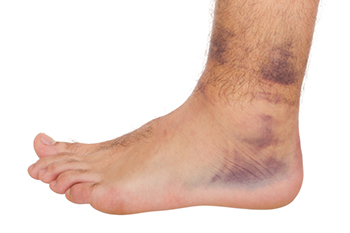
An ankle sprain might seem like a minor injury, but without proper care, it can lead to long-term instability and recurring issues. The ligaments in the ankle are designed to provide support and balance, but a sudden misstep, awkward landing, or quick pivot can overstretch or tear them. Many people assume a sprain will heal on its own, but rushing back to activity too soon can cause weakness and increase the risk of reinjury. Persistent swelling, pain, or difficulty bearing weight may indicate a more severe sprain that requires medical attention. Strengthening and balance exercises help prevent future sprains, while wearing supportive footwear adds protection. Ignoring a sprain can lead to chronic instability, making future injuries more likely. If pain lingers or mobility is compromised, it is strongly suggested that you see a podiatrist to ensure proper healing and prevent long-term damage.
Although ankle sprains are common, they aren’t always minor injuries. If you need your ankle injury looked at, contact one of our doctors from New Jersey and New York. Our doctors can provide the care you need to keep you pain-free and on your feet.
How Does an Ankle Sprain Occur?
Ankle sprains are the result of a tear in the ligaments within the ankle. These injuries may happen when you make a rapid shifting movement while your foot is planted. A less common way to sprain your ankle is when your ankle rolls inward while your foot turns outward.
What Are the Symptoms?
- Pain at the sight of the tear
- Bruising/Swelling
- Ankle area is tender to touch
- In severe cases, may hear/feel something tear
- Skin discoloration
Preventing a Sprain
- Wearing appropriate shoes for the occasion
- Stretching before exercises and sports
- Knowing your limits
Treatment of a Sprain
In many cases, the RICE method (Rest, Ice, Compression, and Elevate) is used to treat ankle sprains. However, you should see a podiatrist to see which treatment option would work best with your injury. In severe cases, surgery may be required.
It is important to ask your doctor about rehab options after you receive treatment for your injury. Stretching, strength training, and balance exercises may help the ankle heal while also preventing further injury.
If you have any questions, please feel free to contact our offices located in Little Silver, NJ and New York, NY . We offer the newest diagnostic and treatment technologies for all your foot care needs.
